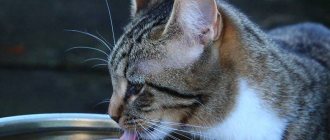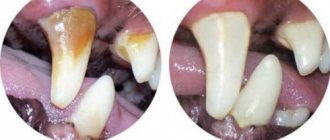Cystitis in cats is one of the same common diseases as urolithiasis. The disorder often recurs, which requires the animal owner to constantly carry out preventive treatment and monitor the pet’s health.
Cystitis in cats
Most often, the inflammatory process in the bladder is recorded in females, which is associated with the characteristics of their body. Treatment of cystitis is carried out by a comprehensive selection of medications by a veterinarian after a preliminary examination and an accurate diagnosis.
Features of the disease in cats
Cystitis is an inflammatory process that develops in the walls of the bladder. The violation can be provoked by several reasons, from banal hypothermia to serious infectious infection. At the initial stage of development, the disease practically does not make itself felt, which is why precious time allotted for treatment is lost. Only an increase in drinking rate and more frequent trips to the toilet can suggest the development of cystitis.
The early stages of the disease usually go undetected
The inflammatory process with such a disorder develops directly inside the bladder on its mucous membrane. The main symptoms of the disease appear when the walls of the organ become tense, when urine begins to put pressure on them. After emptying the bladder, the cat experiences relief for a while. But given the deepening of inflammation in the walls of the organ and the spread of bacteria, the pain becomes constant.
Cystitis affects both the genitourinary system as a whole and the kidneys
If left untreated, cystitis causes serious complications throughout the entire urinary system, gradually rising up and reaching the kidneys. Bacteria can also enter the bloodstream and cause damage to the reproductive system.
Treatment of cystitis in cats is practically no different from treatment of the disorder in humans. The difference is due to the selection of more gentle doses and different durations of the course of suppressing inflammation.
Video - Cystine leakage in a cat
Symptoms and treatment of cystitis in a castrated cat
Among males, those who are deprived of their “manhood” have a greater predisposition to the disease. The basis is the changed functioning of the genitourinary system after surgery. Systematic stagnation of blood causes swelling, which in turn provokes spasm and urine retention. The result of this feature is inflammation of the bladder, which most often becomes chronic. The initial signal of pathological disorders is behavioral changes.
A well-mannered cat begins to go to the toilet in places other than those designated for this , although there were no complaints about him before. The thing is that itching, burning or pain when emptying causes the associative series of tray-discomfort. This is a sure sign that unfavorable processes are occurring in the body of your furry friend.
The symptoms of neutered leopards are no different from their other relatives. All the same uncomfortable sensations that cause suffering.
As soon as possible, call a doctor or take your pet yourself. Follow a diet, rest regimen and follow all the specialist’s instructions. In cats that have recently undergone castration, the body is weakened and antibiotics will bring great stress. The sooner you notice the problem and take measures to eliminate it, the greater the chance of avoiding aggressive methods.
Main factors and causes of cystitis development
The following reasons can lead to the formation of a violation:
- improper nutrition of the cat, due to which metabolic processes in the body begin to be disrupted, stones are formed that injure the walls of the bladder and lead to symptoms of cystitis;
- infectious lesions of the urinary system and adjacent organs;
- insufficient fluid in the diet and water with a high content of minerals, which can lead to the formation of stones and salts;
The ability of cats to go without moisture for a long time does not mean that an empty bowl of water can be ignored
- insufficient nutrition or overfeeding of the cat;
- development of urolithiasis and bladder injury;
- stress experienced by the animal;
- hypothermia.
Tense posture when urinating in a cat with cystitis
You cannot think that hypothermia of a cat’s body occurs only in outdoor conditions during the cold or rainy season. Sleeping in a draft, on thin bedding, a bare floor, or swimming in water can ultimately lead to negative consequences and the occurrence of cystitis.
The most common causes of cystitis
Cystitis in a cat is a severe pathology.
There are many reasons for the development of cystitis in a pet. Depending on what caused the disease, therapy is carried out.
The main provocateurs of pathology:
- bacterial infections – develop more often in cats over 10 years of age;
- urolithiasis of the kidneys, if stone or sand damages the mucous membrane;
- long-term use of steroid drugs;
- diabetes;
- lack of fluid in the body;
- not emptying their bladder often enough – cats can endure for a long time if their litter box is too dirty or they are not allowed outside;
- idiopathic cystitis - its nature has not been established, and apart from the symptoms of inflammation of the bladder, there are no other disorders in the animal’s condition;
- severe injuries;
- severe stress;
- long-term pain syndrome;
- general exhaustion;
- abdominal trauma;
- freezing;
- parasitic lesions.
In rare cases, the disease can develop in pregnant cats due to the fact that the enlarged uterus puts pressure on the bladder, impeding the flow of urine.
Maintenance therapy is carried out to reduce symptoms. The use of antibiotics is prohibited in this case, as they can harm the development of the fetus.
Important! Cystitis is extremely rare in kittens.
Main signs and symptoms of cystitis in cats
You can suspect the presence of a disorder in your pet’s body by the presence of signs typical of bladder inflammation:
- The cat constantly runs to the litter tray to urinate. Often the animal does not manage to get to the toilet, and gradually the pet begins to shit all over the apartment;
- Taking into account the complication of the condition, the animal will feel a constant urge to go to the toilet, but it will not be able to excrete even a small portion of urine;
A cat's unsuccessful trips to the toilet should be a wake-up call for the owner.
- Frequent urges are additionally accompanied by a loud scream, due to a feeling of pain and cutting in the urethra and bladder;
- The excreted urine is dark in color; there may be impurities of blood and stones if the animal additionally suffers from urolithiasis;
- With infections of the urinary system and the development of inflammation, pus may accumulate in the bladder, which gives the urine a rotten smell;
The characteristic unpleasant smell from pet urine indicates internal pathologies.
- Against the background of the inflammatory process, the animal’s body temperature rises, it can reach critical levels in the acute stage;
- The heat provokes fever, the pet refuses to drink and eat;
- The animal is lethargic, does not want to play and constantly lies down;
- When palpating the abdomen, the cat reacts sharply to the touch, as this area becomes painful and a feeling of fullness appears;
- Because of this symptom, the cat cannot lie on its stomach; lying on its side also causes discomfort.
In case of urinary incontinence, the cat is given special diapers.
If a cat experiences swelling in the extremities due to cystitis, we are already talking about the formation of nephrotic syndrome. It is associated with damage to the upper and lower parts of the urinary system.
The need to put a diaper on your cat may shock the owner, but there is nothing complicated or unusual in this procedure. Below are some basic tips for dressing your pet in diapers.
Diapers for cats: application and cost
Video: Symptoms of cystitis in a neutered cat
What is cystitis and is it dangerous for cats?
Cystitis is an inflammatory pathology occurring in the bladder. Most often, the disease in cats is caused by bacterial flora. In this case, the mucous membrane of the bladder becomes inflamed, and in advanced cases, the deeper layers of the organ. The disease is accompanied by painful symptoms, and the animal’s behavior immediately changes.
If cystitis is provoked by pathogenic microflora, then it can ascend to the kidneys, contributing to the occurrence of inflammation in them. Severe symptoms of the disease appear more often in cats than in cats, which is associated with the anatomical features of the male urinary system.
The cat's genitourinary system is designed in such a way that an infection from the bladder can spread to the kidneys
The started process leads to a change in the pH level of urine, at which concretions (stones) are easily formed, which can lead to urolithiasis. If the disease becomes chronic, it will manifest itself at the slightest hypothermia. Against the background of this disease, other inflammatory processes may occur: pyelonephritis, glomerulonephritis, etc.
Attention! To reduce the risk of complications, it is important to show your pet to a doctor when the first signs of illness appear.
Diagnosis of disease in animals
To make a diagnosis, several medical procedures are required.
Table 1. Diagnosis of cystitis in cats
| Procedure | Leak details |
| In-person examination by a veterinarian | 1. The doctor collects anamnesis and assesses the external condition of the cat; 2. Palpation of the abdomen and bladder area is mandatory. |
| General blood analysis | 1. The doctor checks how much the leukocyte level has increased; 2. Registers the presence or absence of signs of infection; 3. Monitors ESR |
| General urine analysis | 1. The doctor evaluates the color of the urine and the presence of traces of blood in it; 2. Checks the level of leukocytes and casts; 3. Necessary for culture testing for sensitivity to antibiotics |
| Blood biochemistry | 1. It is carried out with the determination of the hepatic-renal complex; 2. Makes it possible to assess the severity of damage to the urinary system |
| Ultrasound | 1. Assess the degree of neglect of the inflammatory process; 2. Confirms or denies the presence of additional formations in the urinary system |
A cat undergoing an ultrasound
Causes of inflammation
The causative agent of infectious cystitis is most often staphylococcal flora. Bacteria enter the bladder through ascending and descending routes. In the first case, the infection penetrates through the urethra (urethra), and in the second it descends from the kidneys in acute and chronic ailments of these organs. Klebsiella and Proteus can also provoke the inflammatory process. Less commonly, the causative agent is the herpes virus, as well as candidal fungi.
Staphylococcal flora is most often a provoking factor for cystitis in cats.
The following may contribute to the occurrence of the disease:
- hypothermia;
- infectious processes in the pelvic organs;
- injury;
- sedentary lifestyle;
- improper feeding;
- parasitic infections;
- stress;
- decreased immune function;
- avitaminosis;
- chronic diseases.
There is a separate form of the disease called idiopathic cystitis. This variety occurs without obvious reasons and is characterized by the presence of the same symptoms. The provoking factors of this pathology are unknown.
First aid for cystitis in cats
If your pet shows signs of illness, follow these recommendations:
- immediately seek medical help for detailed consultation;
- do not give your pet any painkillers, with the exception of antispasmodics, but you should tell your doctor about their use;
- before contacting a specialist, you need to completely remove food, which will reduce the load on the kidneys and reduce the concentration of urine;
By limiting your pet's food, you will help him by relieving additional stress on his kidneys.
- at the same time, it is strictly forbidden to change the drinking regime; it is even recommended to increase it, which will allow bacteria to be removed from the body faster;
- the cat should be warm and at rest at all times;
- If there are children and other animals at home, the sick pet must be isolated.
Cystitis is dangerous due to rapid dehydration of the body, therefore a sick cat should be provided with good water
You cannot feel the animal’s belly on your own. Cystitis may be accompanied by blockage of the urinary canal, which causes stretching of the bladder walls. Excessive external pressure only increases the tension of the organ and can lead to its rupture.
Diagnosis of cystitis
Only a veterinarian can diagnose cystitis after examining the cat and conducting laboratory tests. The examination includes palpation, biochemical, microbiological and cytological analysis of the animal’s blood and urine. It should be remembered that home diagnosis, as well as self-treatment, can lead to serious complications.
When palpating the lower abdomen through the abdominal wall, the cat experiences tension and pain. In this case, the bladder is often empty. If necessary, the doctor prescribes an ultrasound examination. It helps determine the degree of advanced cystitis in a cat and the presence of additional inclusions in the bladder.
An indicative diagnostic sign is the amount of urine. If the inflammation has not affected the kidneys, then the total daily volume of fluid excreted does not decrease. Laboratory testing shows the presence of protein, mucus, epithelial cells, and red blood cells in the urine. A sick animal has a significantly increased number of leukocytes. Microbiological culture also confirms the presence of fungal and bacterial flora.
Effective drugs against cystitis
During treatment, complex medications should be selected to eliminate cystitis. An antibiotic must be prescribed, which has the main antibacterial effect.
Table 2. Medicines against cystitis
| Name | Dosage | A course of treatment | Description |
Stop Cystitis | Tablets: 1 tablet for cats weighing up to five kilograms and 1.5 tablets for cats weighing over five kilograms Suspension: 20 ml for cats up to five kilograms, if the specified weight is exceeded - 30 ml | The number of daily doses and course duration are discussed separately for each individual. | A drug developed specifically for the treatment of cystitis in cats. It is distinguished by its natural composition, which includes nettle, birch, lingonberry and horsetail. Has a complex effect, eliminating inflammation, pain, protecting the pet from the formation of stones |
No-shpa | In the form of injections in a dosage of 0.5 ml morning and evening | No more than one week | An antispasmodic drug that eliminates pain and discomfort when urinating |
Cyston | 0.25-0.5 tablets morning and evening | Up to one month or more, if the condition of the individual requires it | A natural drug that suppresses the signs of cystitis. Well tolerated in combination with antibiotics. The dose depends on the severity of the disorder, the age of the cat, and its condition. literal courses are carried out when inflammation is combined with urolithiasis |
Ceftriaxone | For cats weighing up to two kilograms - 0.5 ml, if this weight is exceeded, the amount of active substance doubles | Up to 10 days (for severe infection) | A powerful antibacterial drug to suppress the growth of bacteria. When treating cystitis in cats, it is used in the form of injections, which are given in the area of the hind paw or thigh. |
Papaverine | 0.5 ml morning and evening | No more than one week | A medication that relaxes smooth muscles, relieving spasms and pain. Also prescribed in the form of injections |
Enrofloxacin | 5 mg/kg daily | no more than 10 days. For moderate and mild infection, the duration of treatment can be 5-7 days | Broad-spectrum antibiotic. Used to relieve pain, inflammation and swelling. Injected subcutaneously |
| Erythromycin | 10-20 mg/kg. The number of daily doses depends on the severity of the disorder. On average - 2 or 3 times a day | Up to two weeks | Broad-spectrum antibiotic. For use in cats only subcutaneously. The lower the weight and age of the cat, the less active substance is administered to it. The number of daily doses depends on the severity of the disorder |
Kotervin | 2-4 ml morning and evening | 7 days. In the future, every 12-16 weeks the product can be used as a prophylaxis | The drug is a sterile solution for oral use. It is distinguished by its most natural composition, which includes knotweed, steelhead root, and horsetail. Once opened, the bottle should not be stored for more than one week. |
All the medications described have analogues. But you cannot replace one drug with another without specifying the new dose and course of treatment. Products with similar effects may have different auxiliary components, which will ultimately lead to allergies.
Unauthorized replacement of some medications with others can lead to a deterioration in the pet’s condition.
Symptoms of cystitis
Signs of cystitis in cats include:
- frequent trips to the litter tray;
- slight urine output;
- impurities of blood and pus in urine;
- plaintive meow;
- refusal of food;
- thirst;
- darkening of urine;
- decreased activity;
- increased body temperature;
- vomit.
With cystitis, a cat often loses activity
Some cats avoid going to the potty and urinate in other places because they begin to associate the litter box with painful sensations. This habit may persist for some time even after the disease is eliminated.
Fever does not occur in all cases. Temperature is more often observed in acute cystitis. If the disease becomes chronic, there may be no fever. It is not difficult to diagnose the pathology at home, but it can be confused with urolithiasis, so it is not recommended to treat your pet yourself.
A pet with cystitis experiences intense pain in the abdominal cavity, so the animal reacts very violently to attempts to touch the belly.
Symptoms of the inflammatory process - video
Traditional methods of treating disease in cats
Herbal infusions are especially helpful in the presence of bladder inflammation. But they should still be combined with traditional drugs, since cystitis requires a serious antibacterial effect on the site of inflammation.
Table 3. Herbal remedies against cystitis
| Compound | A course of treatment | Recipe | Dosage |
| Plantain, bloodroot and horsetail | 3-7 days | 1. Take plantain, bloodroot and horsetail; 2. In a ratio of 2:1:1, combine and chop the products accordingly; 3. 2-5 grams of herbal ingredients pour 200-250 ml of boiling water; 4. Soak the ingredients for 20 minutes over low heat in a water bath; 5. Remove the broth and cool and bring with clean boiled water to the original volume | 10 ml 30 minutes before meals 4 times a day |
| Oak bark, linden flower part and bearberry | 3-10 days, taking into account the condition of the animal | 1. The ingredients are mixed in equal proportions and crushed; 2. Take a tablespoon of ingredients and pour 250 ml of boiling water; 3. It is necessary to soak the ingredients for 15-30 minutes over low heat, it is better to do this in a water bath; 4. After cooking, the mixture is removed and the plant grounds are completely removed. | Take 5-10 ml half an hour before meals 3 times a day |
| Birch leaves, juniper fruits and dandelion root | No more than 10 days. Minimum course of treatment – 3 days | 1. Combine ingredients in a ratio of 2:1:1; 2. If fresh ingredients are used, they must be washed thoroughly; 3. Having thoroughly crushed the components, pour 250 ml of boiling water into a tablespoon and leave for 8 hours; 4. After infusion, the grounds are removed, the solution should be filtered well | 3-10 ml taking into account the weight and condition of the animal in the morning and evening |
Some decoctions can have a positive effect, but do not forget about possible side effects
The use of natural ingredients does not exclude the occurrence of allergies in a cat. If your pet experiences unwanted reactions such as vomiting, rash, hives, itching, and diarrhea, you should consult a doctor and stop using home methods.
Prevention of cystitis in cats
If an animal has been diagnosed with this at least once, then in the future the owners are obliged to pay more attention to its health and regularly have its urine tested, as well as undergo other routine examinations. For neutered leopards, following a diet is always mandatory. Even if there has been no relapse for a long time, this is not a reason to abandon the preventive regimen. He can return at any time.
Avoid hypothermia, walking in the rain or sleeping on a cold floor; use only warm water for swimming. One of the reasons for bladder inflammation is excess weight and a sedentary lifestyle, which contribute to a general weakening of the body. A decrease in metabolism and immunity allows bacteria to penetrate and multiply in the genitourinary system.
For females, a doctor's examination is required during the postpartum period. At such moments they are at risk due to stress. If necessary (if you notice particular anxiety), it is better to give sedative herbal remedies. Provide constant access to clean water, free from impurities and salts. For nursing representatives of the cat family, a special menu is prepared, after consulting with a specialist.
Don't forget about regular vaccinations and deworming. If you have the slightest suspicion of a recurrence of the disease, immediately seek qualified advice.
If necessary, the complex of preventive measures includes herbal medicine: taking herbal preparations. The most effective are Canephron, Urolesan, Trinephron. They are accepted by the “mustachioed friend” after a successfully completed therapeutic course.
(Visited 7,172 times, 1 visits today)
Features of caring for a cat with cystitis
When eliminating the disease, you must adhere to a number of mandatory tips that will avoid further spread of the disease and deterioration of the cat’s condition:
- Provide your pet with warmth and comfort. He should not sleep on tiles or other cold surfaces;
- Do not use a heating pad or other warming devices. They can increase bleeding and the rate at which bacteria spread;
Any warming of the affected area is fraught with infection.
- Do not combine traditional drugs with folk ones on your own, as such combinations can provoke acute side effects, including anaphylactic shock;
- The diet should be as balanced as possible; it is better to switch exclusively to professional food during the period of therapy;
- If the cat goes outside, it is better to avoid any walks during treatment. The exception is warm days, during which it is allowed to carry your pet in your arms;
During the illness, limit your pet’s contact with the street as much as possible.
- You should not bathe the animal until all symptoms of the pathology have completely disappeared.
It is especially important to monitor the comfort of the pet for those owners who have weakened, lactating and pregnant individuals. In them, the infection spreads several times faster and can reach the kidneys in the first days.
Some individuals suffering from incontinence are recommended to wear special diapers that absorb discharge. Read below to learn about what cat diapers exist and how to make them yourself.
Diaper for a cat
Treatment of an animal with cystitis
Treatment of the disease is carried out comprehensively using anti-inflammatory drugs, antispasmodics and antibiotics.
Important! It is unacceptable to unauthorizedly replace medications prescribed by a veterinarian or adjust dosages.
Treatment of cystitis with blood in the urine
The presence of blood in a pet's urine indicates a hemorrhagic form of cystitis.
If the main presumptive diagnosis is cystitis, then treatment begins even before all test data are received
In this case, the veterinarian usually prescribes complex treatment:
- Antibiotics. Antibiotic drugs kill or suppress the pathogen, which allows the animal's immune system to destroy the infection completely. In most cases, the broad-spectrum agent amoxicillin is prescribed. The medicine is used for at least a week.
- Hemostatic . Prescribed only in cases of severe blood loss with a significant deterioration in general condition. The drug is selected only by a veterinarian and in a dosage calculated individually for a particular pet.
- Antispasmodics. They help relieve pain and relax the bladder muscles, which is important for facilitating urine flow and improving the cat’s condition. Papaverine is often prescribed.
- Uroseptics. Helps relieve tissue swelling and improve blood circulation in the area of inflammation. Urine passes better, and with it bacteria are actively washed out of the bladder cavity.
- Probiotics. Necessary to neutralize the negative effects of antibiotics on the pet's intestinal microflora. It is convenient to use drugs from a pharmacy for people, such as Bifidumbacterin.
Important! Specific medications can only be prescribed by a veterinarian who can take into account all the characteristics of the sick cat.
Treatment at home
Important! Treatment at home is carried out only after consultation with a veterinarian.
Usually, if the cat’s condition is not serious, there is no need to leave it for therapy at the veterinary clinic, and all procedures can be carried out at home.
Be sure to read:
Kidney diseases in cats: types, what affects the appearance, symptoms, diagnosis, how to treat
The animal is given injections subcutaneously and intramuscularly. In rare cases, intravenous infusions of drugs may be required, and then a specialist will insert a catheter into the cat.
Treatment of chronic cystitis in cats
To speed up recovery, proper nutrition is important.
The chronic form of the pathology requires the use of antibiotics, the action of which is directed against a specific causative agent of inflammation, for which bacterial culture is carried out.
The medicine is administered intravenously, which increases the effectiveness of therapy and reduces the negative effect of antibiotics on the intestines. The course of treatment depends on the severity of the disease and the body’s response to the injected drugs. Tablets are prescribed infrequently.
Cat food for bladder inflammation
During the therapy period, it is necessary to minimize the load on the kidneys and the entire body of the animal. When using professional feeds, preference should be given to premium and super-premium products. It is as balanced as possible and designed taking into account the characteristics of the animal.
Advance
It produces a whole line of medications taking into account the age of the pet; there is dry and wet food for weakened and pregnant cats. The composition contains a large number of minerals and vitamins. The feed itself partly consists of meat components and by-products. Cat owners speak positively about the food, noting its quality and affordability. Produced in Spain.
Feed Advance
Bozita
It also produces dry and wet food, produced in Sweden. The product line allows you to choose food for neutered, aged, young and especially large cats. The feed contains no by-products; only pure chicken, beef, rabbit and fish are used. It is not used in the prevention of urolithiasis, as it does not have enough minerals and vitamins; sometimes traces of corn flour can be found.
Bozita food
Eukanuba
It has a separate line of food for cats suffering from kidney and urinary system diseases. Additionally, it is possible to choose dry or wet food, taking into account the age of the pet; it is produced in Holland and Russia. Products of this brand are recommended for sick animals; the components are balanced and easily digestible. They do not cause allergies, so they can be prescribed even to sensitive and allergenic pets.
Eukanuba food line
Royal Canin
The widest range of products for cats of different ages and suffering from various diseases. Properly selected food not only speeds up the elimination of the inflammatory process, but also protects the animal from the appearance of stones and kidney problems in the future. Some owners note the insufficient amount of meat components in canned food and their rather high cost.
Royal Canin for sterilized cats
Happy Cat DE
The German brand has the most enriched composition. It contains no vegetable protein, only meat components and offal. Available in the form of dry food and canned food. There are products for sick cats, kittens, weakened and pregnant individuals. You can also choose food based on your pet’s weight for neutered individuals. The composition contains algae, fruits and medicinal herbs.
Happy Cat DE line of food for domestic cats
Happy Cat IT
Italian brand developed in partnership with veterinarians. It produces dry and wet food taking into account the age of the cat and its health condition. There is a line for sick animals suffering from disorders of the kidneys, liver, and heart. There are foods for obese cats. The composition is enriched with a large number of meat ingredients and vitamins.
Happy Cat IT pate with turkey
Additionally, a cat's diet for cystitis should be enriched with boiled meat; chicken and rabbit are suitable. Boiled bird hearts and gizzards also have a beneficial effect on the body and do not cause intoxication of the body and concentration of urine. If dairy products are well tolerated, cottage cheese and kefir are useful, but they are given once a day in small quantities. Oatmeal and buckwheat porridge are healthy; they can be mixed with boiled meat.
The diet of a cat with cystitis should include various cereals











